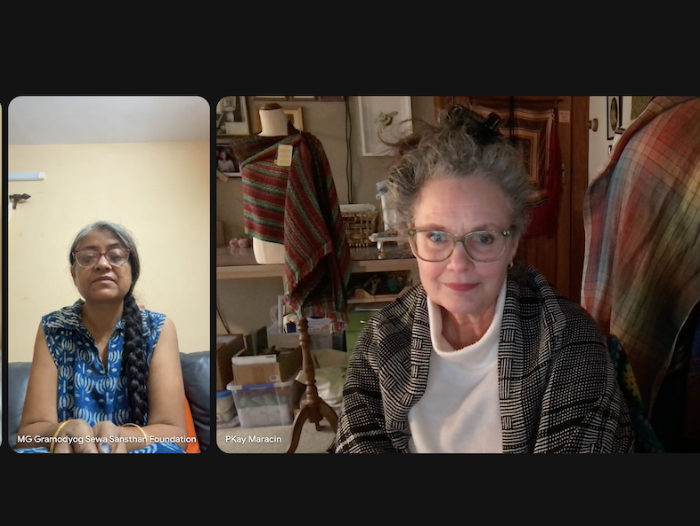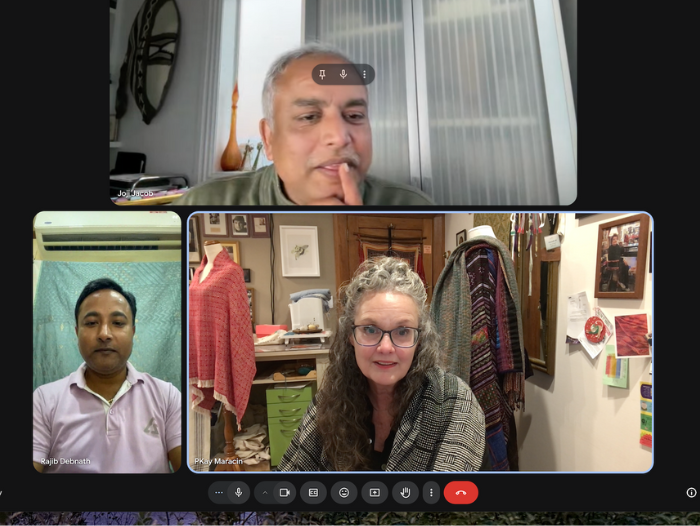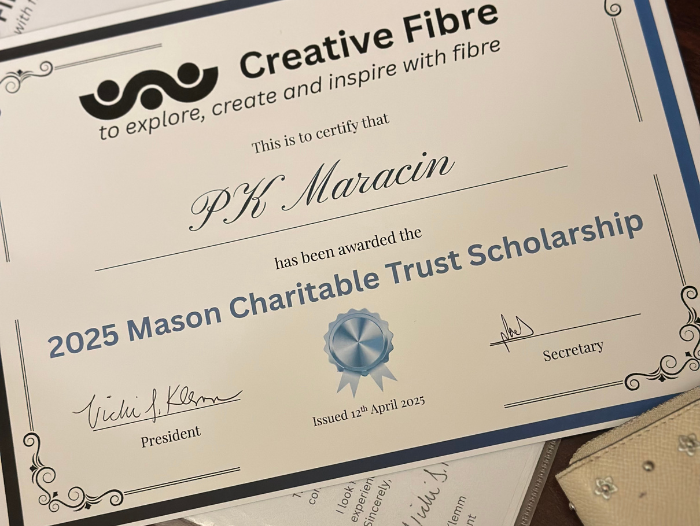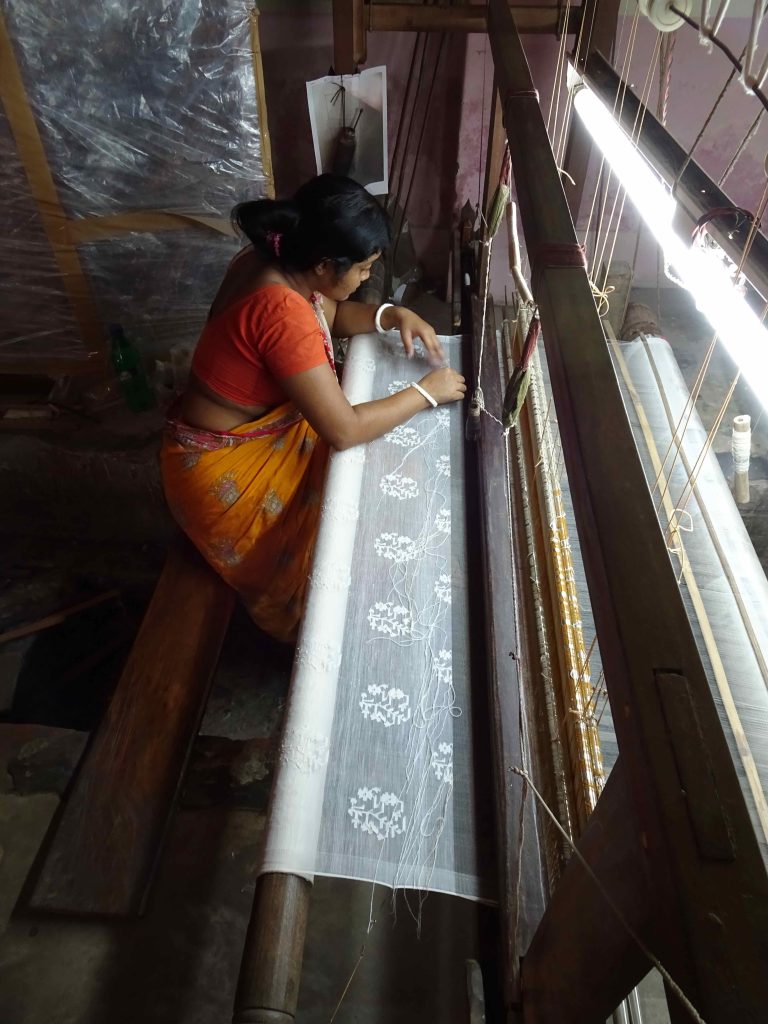
My main objective is to learn the art of supplementary weave on fine fibres. This is called Jamdani weaving and the most skilled artisans live in West Bengal, outside Kolkata. Most looms in rural India are 2 shaft so the majority of the cloth woven is plain weave. Most design aspects in the cloth are coming from either supplementary weft design or multi shuttle colour block weaving.
My desire is to visit, talk and study with local weavers in these remote areas of India who dedicate their lives creating hand spun yarn and weaving cloth in their homes. By watching them work I can gain insight to how they approach weaving, what it means to them, as well as the hands-on experience of learning through their workmanship.
During my visit to west Bengal I will be discovering and studying three important and traditional weave structures: Jamdani, Tangail and Baluchari, along with a selection of lesser-known weaves (Khesh, Dhaniakhali taant). I will also be introduced to the Kantha embroidery style unique to the region, and appliqué techniques.
My main study with be with Jyotish and Rajib Debnath in Kalna to learn the process of Jamdani weaving. Kalna is about 4 hours east of Kolkata in the Gange delta. They specialise in fine muslin Jamdani, woven using only hand spun cotton, and can be credited with the development of the cloth in Bengal. Identified by its unique geometric and floral patterns woven into fine cotton, the father/son and their workers weave the most breathtaking forms of Jamdani onto muslin: some extra weft designs are so fine that they often have to be inserted using a needle rather than a shuttle – in effect, this is like embroidery on the loom.
Jyotish Debnath is a national award-winning master craftsman and a sixth-generation muslin weaver from his family. Their great-grandfathers were Royal Weavers and produced the finest muslins. They are the only privately owned company in India that specialises in pure handwoven muslin and inset Jamdani.
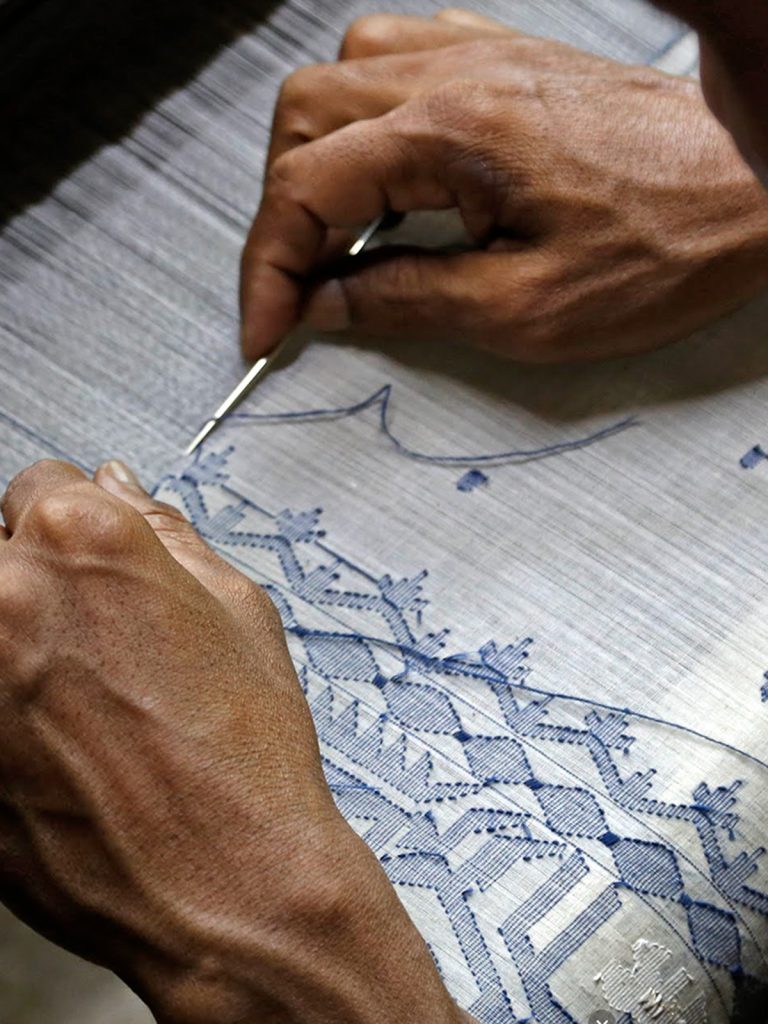

I wrote a 13 page outline portfolio that discussed why and what I would like to study. This included the history of supplementary weft weave in India, a background of the weavers I would be studying with, the day-to-day itinerary with costings, and a small bio. I used Canva to layout my portfolio and printed it at home on glossy paper. I bound it using a spiral coil.
Included in my “box” were 3 full woven pieces (a line shawl. a hand dyed Merino wrap and a towel) and 2 sample pieces of Merino woven on a 8/2 cotton base.

